ELSA, a German graphics card manufacturer, began in the professional market but moved more into the consumer market in the 1990s and still exists in this market today.
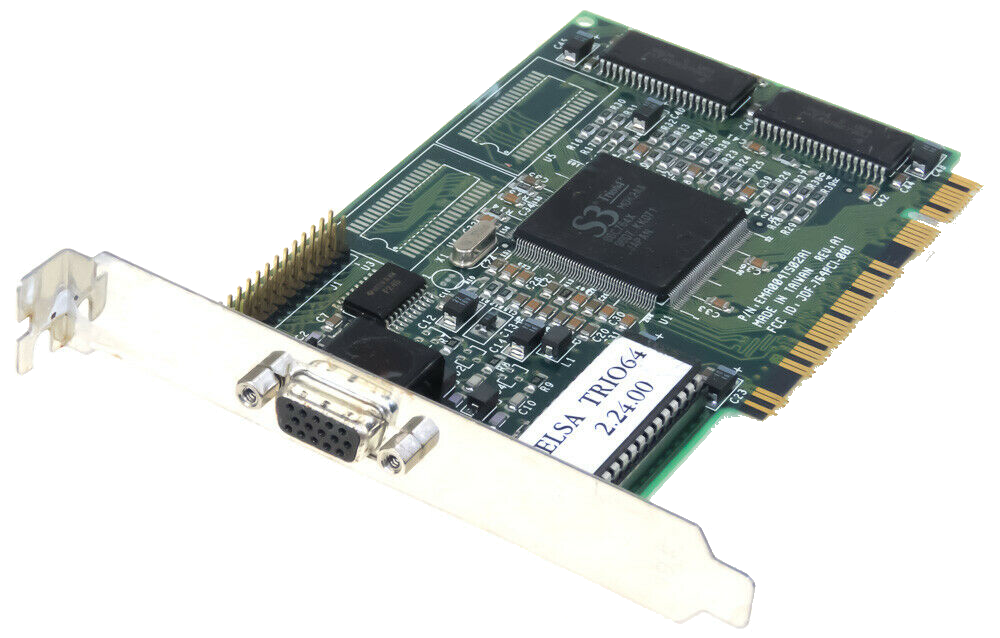 Trio64 Trio64
Launched: 1994
Chipset: S3 Trio64
Memory: 1 MB or 2 MB
Bus: PCI
FCC ID: JDF-764PCI-001
Price When New: ?
Known Board Revisions: A1
More Images

|
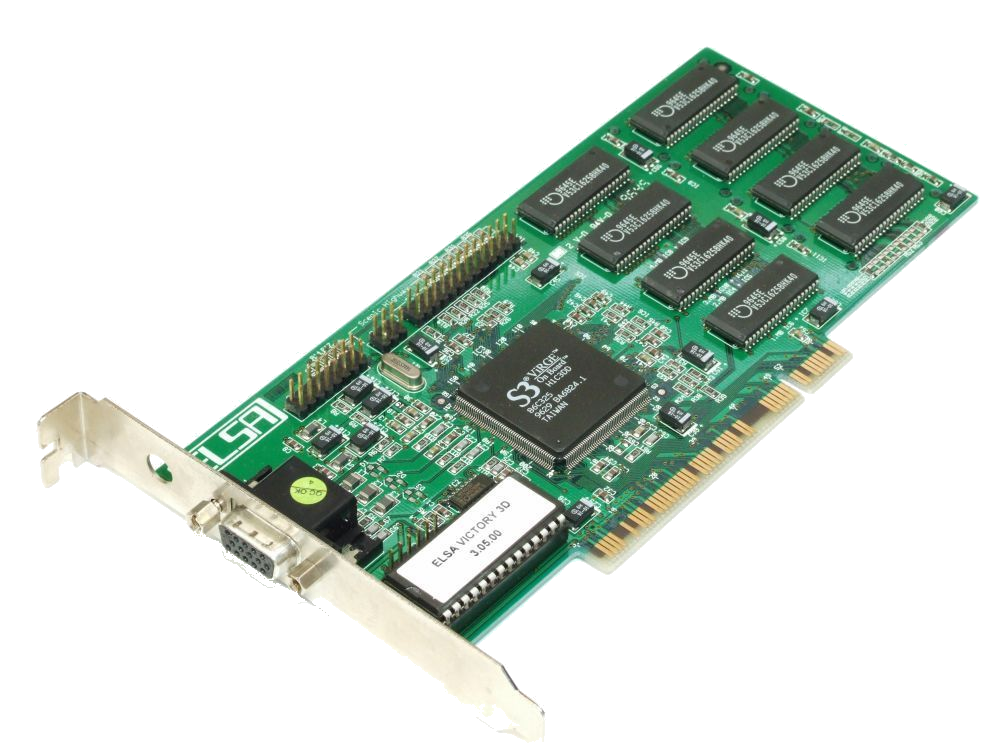 Victory 3D Victory 3D
Launched: 1995
Chipset: S3 ViRGE (86C325)
Bus: PCI
Memory: 4 MB
FCC ID: KJGVICTORY3D
Price When New: ?
Some Victory 3D versions have memory slots for the rightmost four (see images below).
More Images
 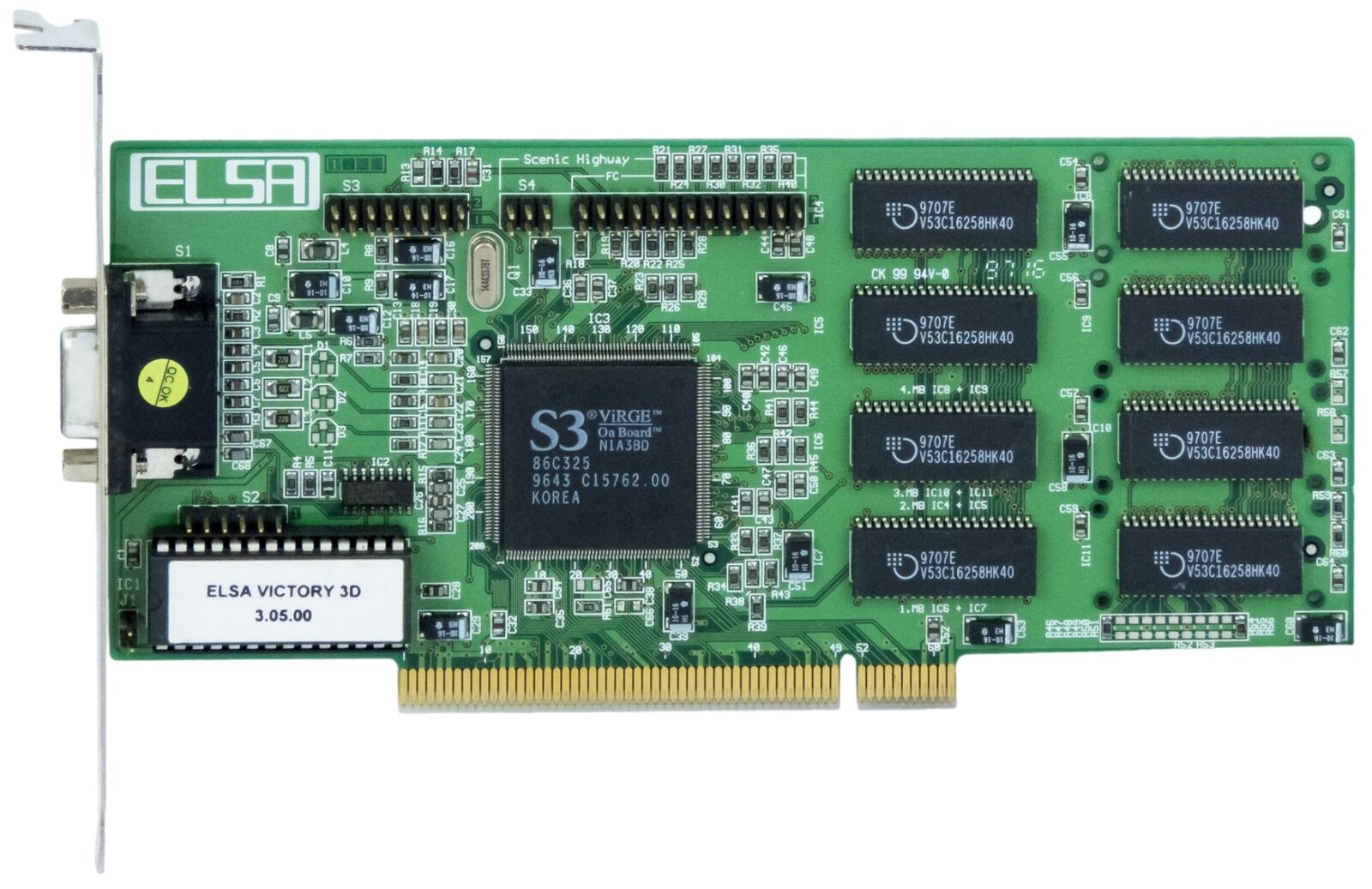 
|
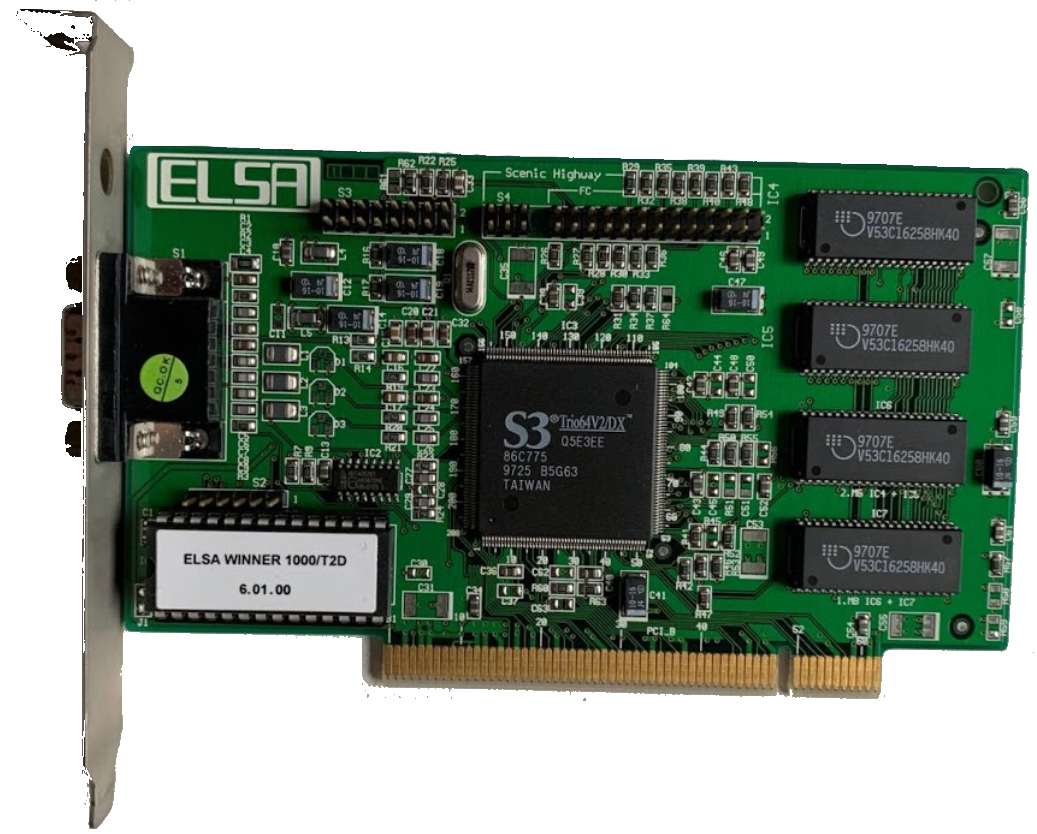 Winner 1000 Winner 1000
Launched: 1996
Chipset: S3 Trio64V2/DX (86C775)
Bus: PCI
Core Clock: 65 MHz
Memory: 1 MB or 2 MB EDO SDR
Memory Clock: 65 MHz
RAMDAC Clock: 170 MHz
Price When New: ?
Drivers: Win 3.1, Win 95/98, OS/2 Warp, DOS |
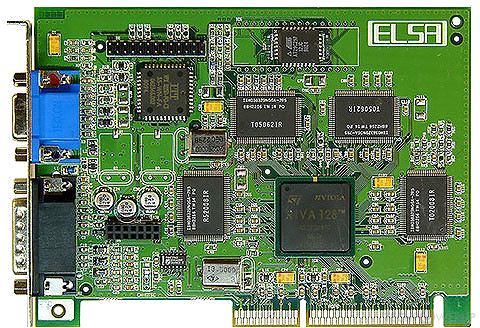 Victory Erazor Victory Erazor
Launched: 1997
Chipset: nVidia RiVA 128
Bus: AGP 2x
Memory: 4 MB SGRAM
FCC ID:
Price When New: ?
Despite the Victory Erazor coming with SGRAM, the performance gains expected from using this supposedly faster memory are negligible.
The Victory Erazor was succeeded by the Victory Erazor LT, which sported nVidia's faster RiVA 128ZX.
More Images
|
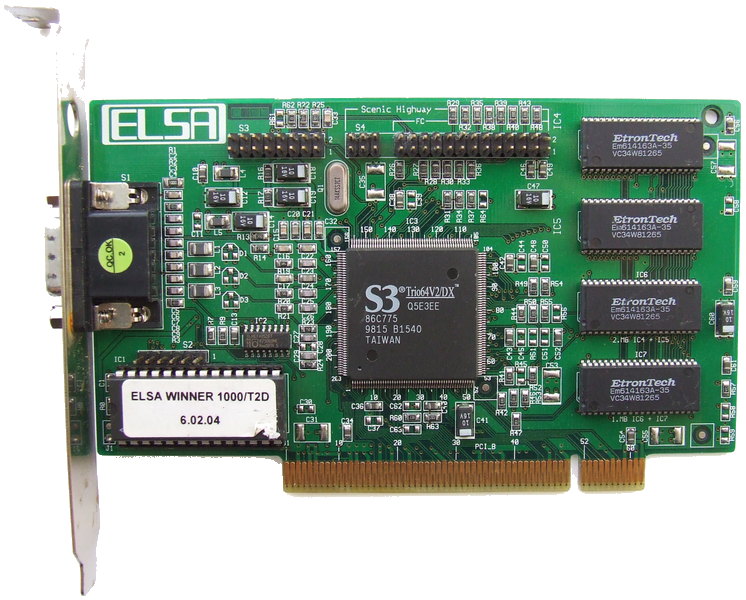 Winner 1000 T2D Winner 1000 T2D
Launched: 1997
Chipset: S3 Trio64V2/DX (86C775)
Bus: PCI
Memory: 2 MB EDO
FCC ID: KJGW1000T2D
Price When New: ?
The "Scenic Highway" feature connector at the top refers to an optional MPEG-1 audio/video decoder card which has the S3 Scenic/MX2 chipset on it.
More Images

DOS Tools
Windows 95 Tools
Windows 3.1 Tools
Drivers: Win 3.1, Win 95/98, OS/2 Warp, NT 3.51, NT 4.0 (WHQL), NT 4.0 (for 386 CPUs) |
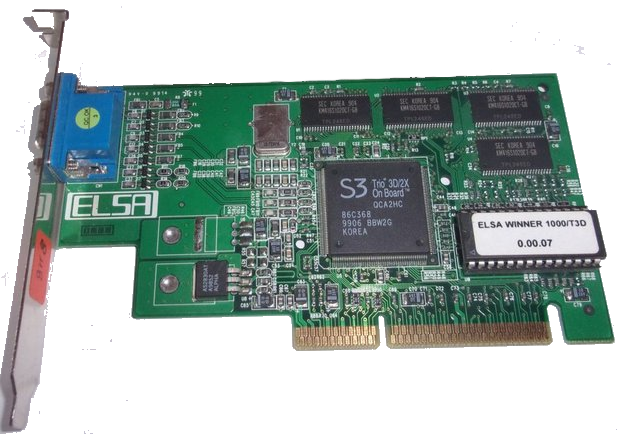 Winner 1000 T3D Winner 1000 T3D
Launched: 1997
Chipset: S3 Trio64 3D/2X
Bus: PCI or AGP 2x
Memory: 8 MB
Price When New: ?
More Images

|
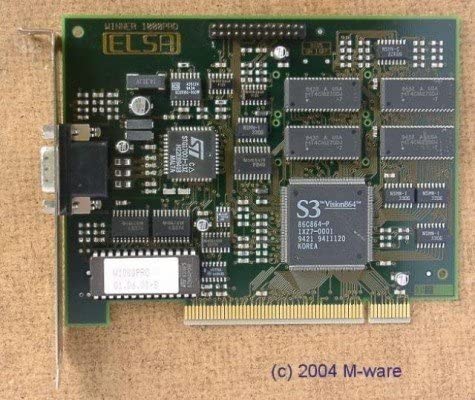 Winner 1000 Pro Winner 1000 Pro
Launched: 1997
Chipset: S3 Vision864
Bus: PCI or VLB
Memory : 2 MB
Price When New: ?
The VESA Local Bus version of the Winner 1000 Pro has a 64-bit memory path. The 1000 Pro has a 25-pin header that supports an optional MPEG daugherboard or TV tuner.
The S3 Vision864 is a good chipset for DOS and Windows compatibility. |
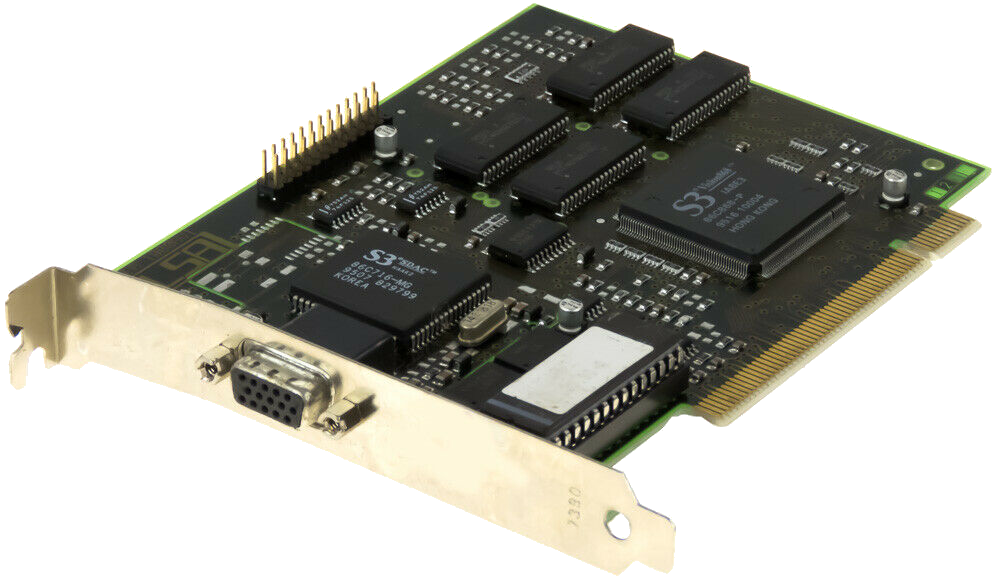 Winner 1000 AVI Winner 1000 AVI
Launched: 1997
Chipset: S3 Vision864
Bus: PCI
Memory: 2 MB
Price When New: ?
Drivers: Win 3.1, Win 95/98, OS/2 Warp, NT 3.51, NT 4.0, DOS |
 Winner 2000 Winner 2000
Launched: 1997
Chipset: S3 Trio64 V2/DX
Bus: PCI
Memory: 4MB (expandable to 8 MB?)
Price When New: ?
Some variants of the Winner 2000 came with the memory expansion slot and some didn't. Perhaps if the board itself was fully populated they didn't add the slot but if you bought the 4 MB version (2 memory chips on the board) you got the expansion slot.
More Images

|
 Winner 2000 AVI/3D Winner 2000 AVI/3D
Launched: 1997
Chipset: S3 ViRGE VX
Bus: PCI
RAMDAC Clock: 220 MHz
Memory: 4 MB EDO VRAM
Price When New: $349
The Winner 2000 AVI/3D supports 1280 x 1024 resolutions in True-Color mode (16.7 million colours) with a 76 Hz refresh rate. For High-Color model (65,000 colours) resolutions can go up to 1600 x 1200 at 85 Hz.
As far as 3D performance goes, this is better than most other ViRGE VX-based boards, but that's not saying much - it's pretty poor. |
 Winner 2000/Office Winner 2000/Office
Launched: 1997
Chipset: 3dlabs Permedia 2
Bus: PCI
Memory: 4MB or 8 MB SGRAM
RAMDAC Clock: 230 MHz
Price When New: ?
Like other ELSA "/Office" cards, the Winner 2000/Office is pitched at business applications. It can display True-Colour graphics at resolutions up to 1280 x 1024.
The 4 MB version comes with a SODIMM slot for expansion up to 8 MB.
Unfortunately, as with all 3dlabs Permedia-based boards, DOS VESA compatibility is non-existent (the onboard VGA BIOS ROM has no VESA modes).
Regarding performance, the Winner 2000/Office is not quite as fast as a RiVA 128-based card. The drivers that came with the card are extensive: Windows 3.1, OS/2 Warp 4.0, NT 3.51, NT 4.0 (OpenGL driver). This last bit is important: OpenGL is *only* supported under NT 4.0.
3D performance is not great with this card, however. |
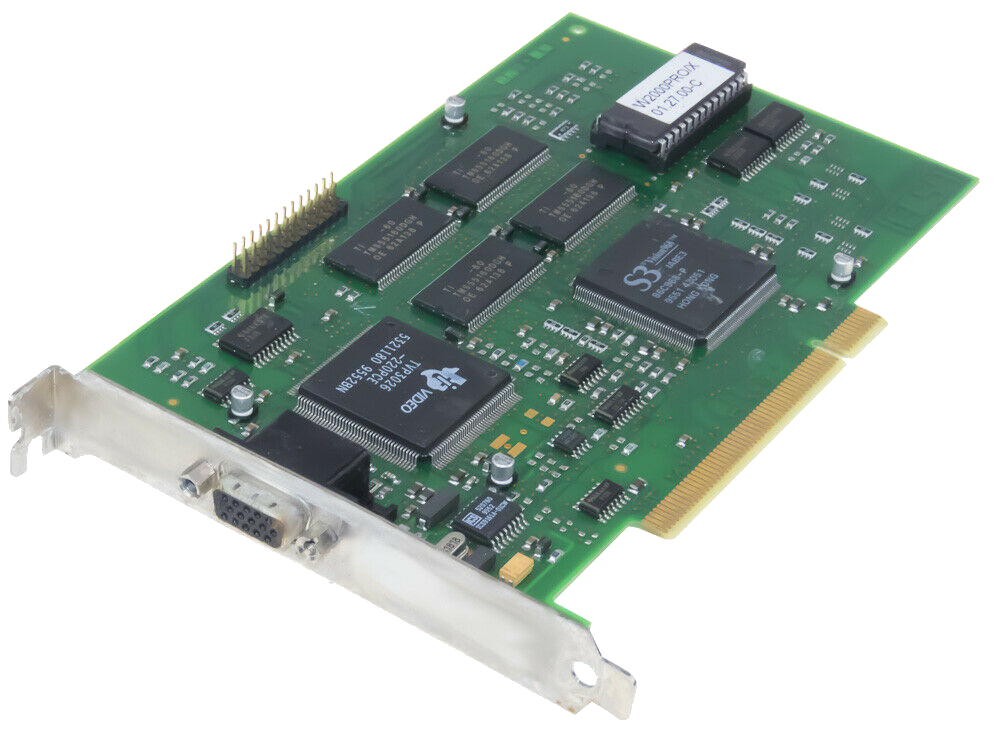 Winner 2000 Pro/X Winner 2000 Pro/X
Launched: 1997
Chipset: S3 Vision964
Bus: PCI
Memory: 4MB
Price When New: ?
More Images

|
.jpg) Winner 3000-M Winner 3000-M
Launched: 1997
Chipset: S3 ViRGE/VX
Bus: PCI
Memory: 2 MB or 4 MB
FCC ID: KJGW3000L
Price When New: ?
More Images
.jpg) .jpg)
All images provided by DOS Days contributor, targeted. |
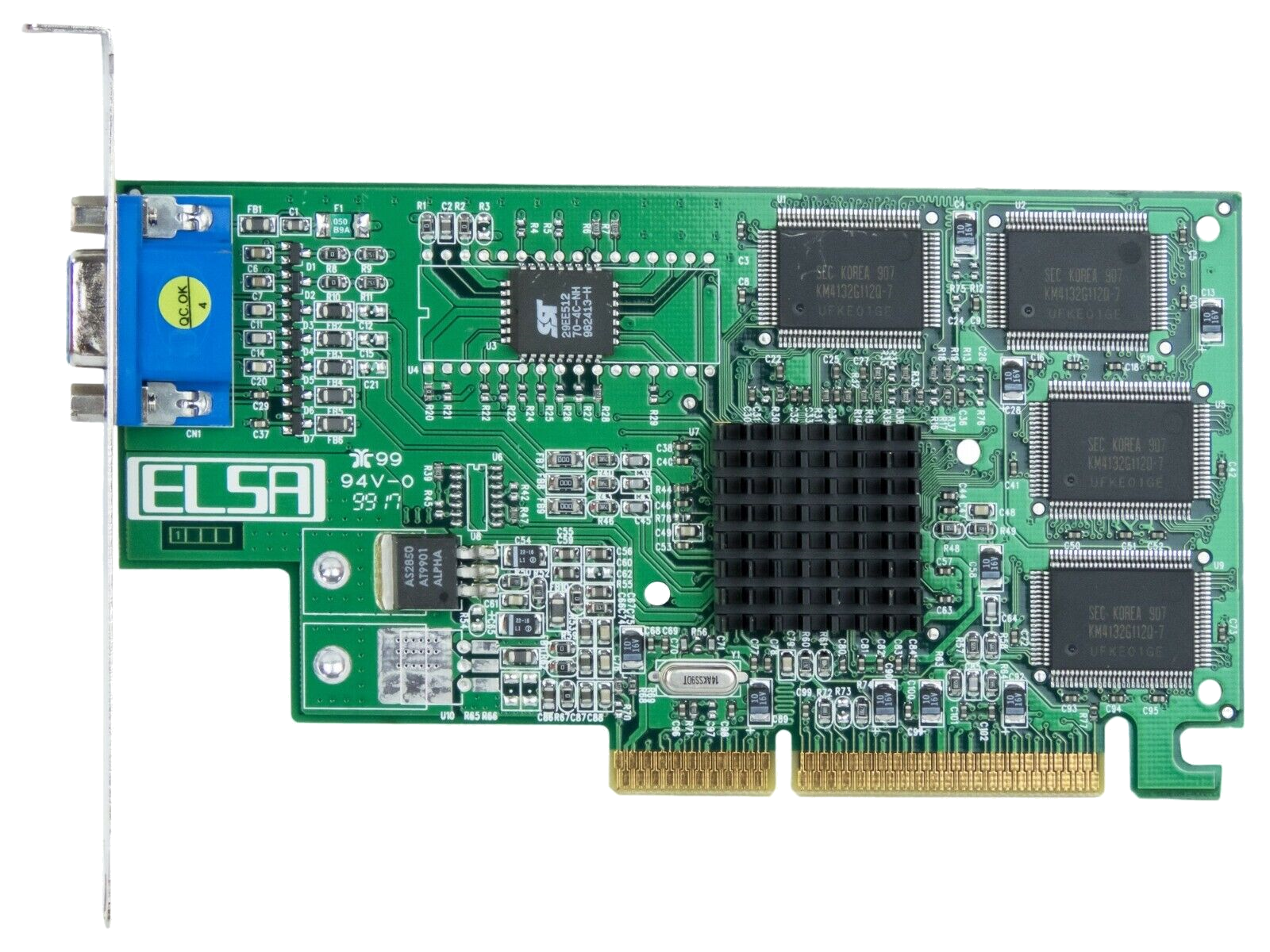 Winner II Winner II
Launched: 1997
Chipset: S3 Savage4 Pro
Memory: 16 MB or 32 MB SDRAM
Bus: PCI or AGP 2x
Price When New: ?
The Winner II came in two variants - the Winner II-16 and the Winner II-32, with the suffix denoting the amount of RAM onboard.
Supports resolutions up to 1920 x 1440.
Maximum V-Sync Rate is 75 Hz.
More Images
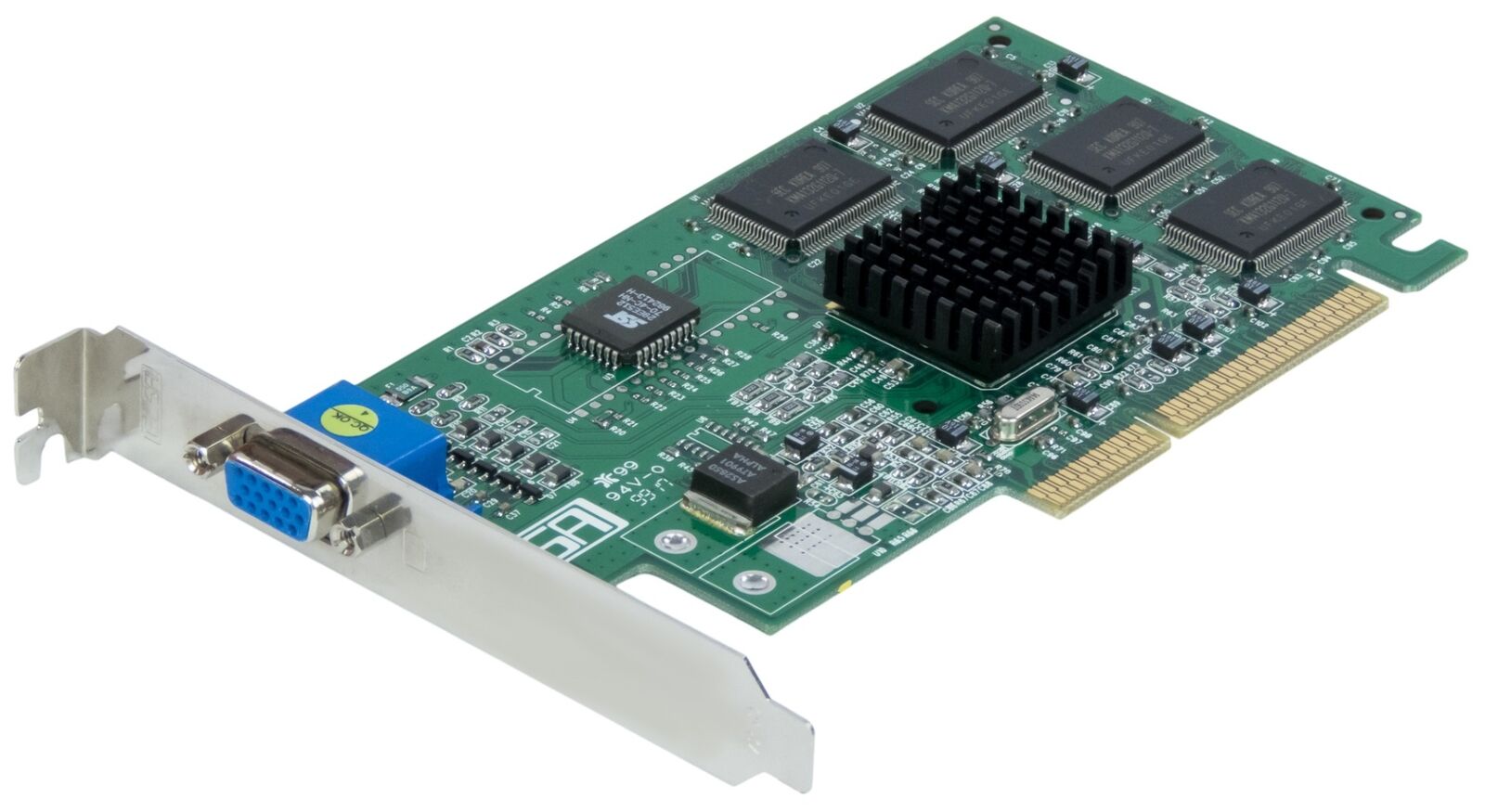
|
.jpg) Victory Erazor LT / LT-8 Victory Erazor LT / LT-8
Launched: 1998
Chipset: nVidia RIVA 128ZX
Memory: 8 MB SDRAM
Bus: AGP 2x
RAMDAC Speed: 250 MHz
VBE: 3.0
Price When New: ?
The Victory Erazor LT was the follow-up to ELSA's earlier Victory Erazor which had the original [and slower] RIVA 128 chip. With double the video memory and much faster RAMDAC, the LT went up against the likes of ATI 3D Rage Pro, Matrox Mystique 220, and S3 ViRGE/GX2 cards.
It supported VESA Bios Extensions 3.0 and DDC1 and DDC2B standards.
User Manual
More Images
.jpg)
|
 Victory II / Victory II-A16 Victory II / Victory II-A16
Launched: 1998
Chipset: 3dfx Voodoo Banshee
Bus: AGP 2x
Memory: 16 MB SGRAM
Price When New: $150 (street price in Dec 1998)
The Victory II was ELSA's version of the 3dfx Vooodo Banshee, a combined 2D and 3D graphics accelerator card. It supported 2D resolutions up to 1600 x 1200 at a 75 Hz horizontal refresh rate.
"Likewise, the 3Dfx Voodoo Banshee-based ELSA Victory II was a top performer, slightly behind its sibling [ELSA Victory Erazor II] on some tests and slightly ahead on others. It supports virtually identical quality features, with the exception of 32-bit textures - a common fault in Banshee cards. In subjective gameplay testing, scene quality was excellent. Screens in 3D Baseball were especially sharp, much better than with the Erazor II. Incoming also ran well. One caveat, however: If you expect to work with high resolutions, be wary of the Victory II's below-average Video Bandwidth Index. This score suggests the card's analog circuitry is not equipped to turn pixels on or off quickly enough to display good images at resolutions higher than 1024-by-768.
Generally, both ELSA cards are fine choices. They don't differentiate themselves from similar offerings by Creative Labs and Diamond Multimedia, so you can feel free to base your purchasing decision on other factors, such as the final price and the software bundled in."
PC Magazine, December 1998
More Images
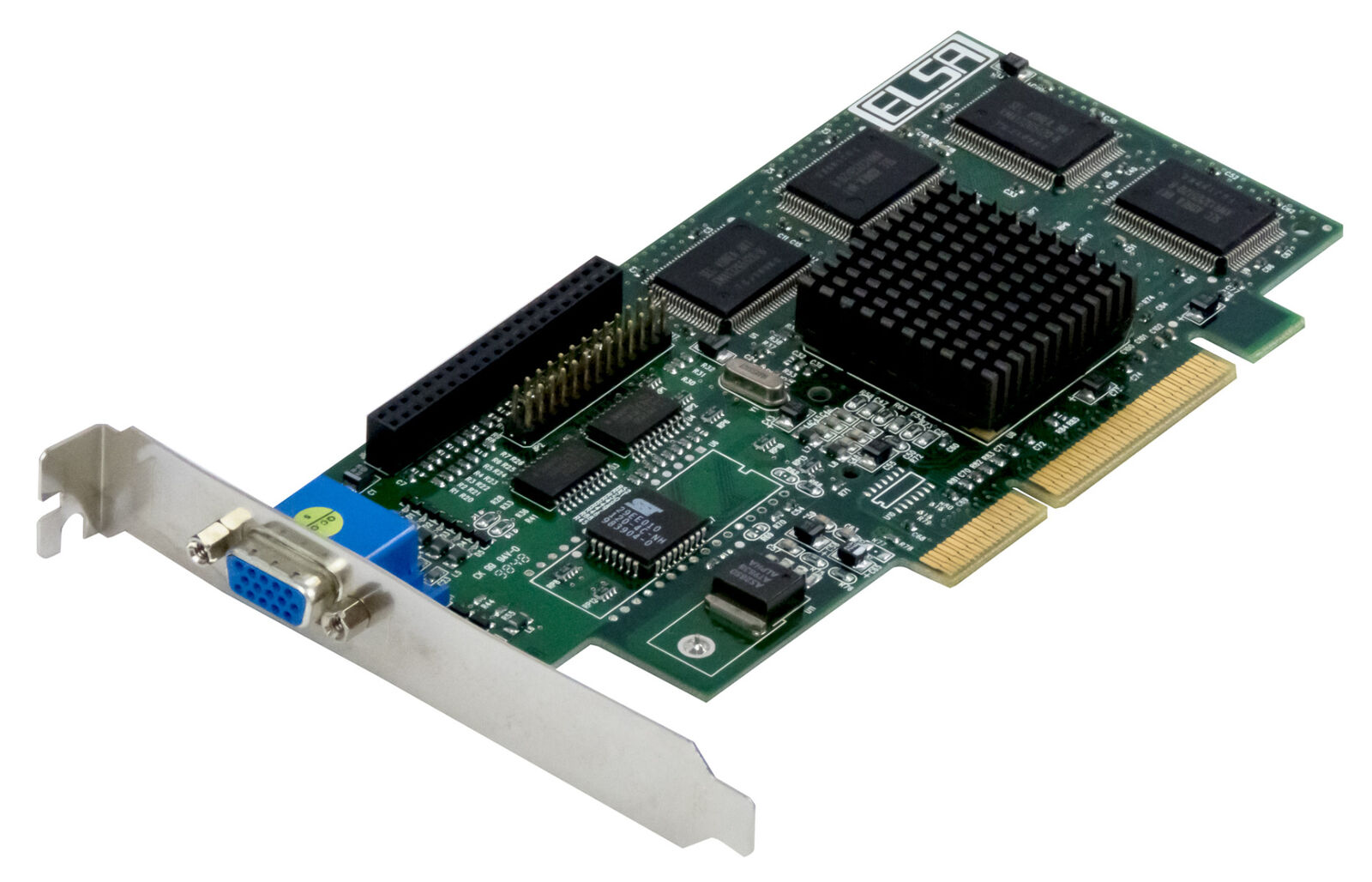
|
.jpg) Erazor II / Victory Erazor II Erazor II / Victory Erazor II
Launched: January 1999
Chipset: nVidia RiVA TNT
Bus: AGP 2x
Core Clock:
90 MHz(?)
Memory: 8 MB or 16 MB SGRAM (128-bit)
RAMDAC Clock: 250 MHz
Price When New: ?
Erazer II is ELSA's consumer market-oriented card featuring nVidia's RiVA TNT chipset. At the time of release ELSA also launched Synergy II which is the same card but has specific drivers for professional applications. Unlike other cards based around this chipset, ELSA moved away from nVidia's 'reference' design. It is on a smaller board and has a fan to cool the chipset (though some versions of this ELSA card only have a heatsink).
The Erazor II was the successor to their earlier Victory Erazor LT, which had the previous-generation nVidia RIVA 128ZX chipset.
Given that it's based on the nVidia RiVA TNT chip, it runs a fast 128-bit memory interface and can support up to 16.7 million colours (24-bit TrueColor).
The card supports a maximum resolution of 1920 x 1080 at 16 bits per pixel colour depth.
"Likewise, the 3Dfx Voodoo Banshee-based ELSA Victory II was a top performer, slightly behind its sibling [ELSA Victory Erazor II] on some tests and slightly ahead on others. It supports virtually identical quality features, with the exception of 32-bit textures - a common fault in Banshee cards. In subjective gameplay testing, scene quality was excellent. Screens in 3D Baseball were especially sharp, much better than with the Erazor II. Incoming also ran well. One caveat, however: If you expect to work with high resolutions, be wary of the Victory II's below-average Video Bandwidth Index. This score suggests the card's analog circuitry is not equipped to turn pixels on or off quickly enough to display good images at resolutions higher than 1024-by-768.
Generally, both ELSA cards are fine choices. They don't differentiate themselves from similar offerings by Creative Labs and Diamond Multimedia, so you can feel free to base your purchasing decision on other factors, such as the final price and the software bundled in."
PC Magazine, December 1998
It was bundled at launch with the game Recoil and a Game Sampler CD consisting of 20 demos.
Performance-wise, Erazor II is very similar to the STB Velocity 4400, another TNT-based card, though the SGRAM on the Erazor II ought to give this card a slight lead. It can process up to 90 Mpixels/sec and 180 Mtexels/sec, or in 3D rendering up to 6 million triangles/sec.
User Manual
Flash BIOS Utility and BIOS v2.0x.0x file (10 Feb 1999)
More Images
.jpg) 
First image above is the rear of the card at the top, both courtesy of DOS Days contributor, targeted.
|
.jpg) Synergy II Synergy II
Launched: April 1999
Chipset: nVidia RiVA TNT2
Bus: AGP 2x and 4x
Core Clock:
?
Memory: 16 MB or 32 MB SGRAM (128-bit)
Memory Clock: 150 MHz
RAMDAC Clock: 300 MHz
Price When New: ?
Synergy II was ELSA's first card to feature the nVidia RiVA TNT2 chipset and came in the then-new NLX form factor. This wasn't well-adopted by the PC community, and does restrict such cards to not having as much functionality due to the very limited space on the backplate - as such the Synergy II does not have any TV-out or flat-screen output capability.
The 32 MB variant of the Synergy II came with an additional 16 MB mounted on the rear of the card.
Released shortly after their RiVA TNT-based Erazor II, the Synergy II is a closer companion with their Erazor III. Unlike the Erazor II, Synergy II only comes with a heatsink (no fan to cool the chipset), which is a cheap move that doesn't help when driving the TNT2 in games.
More Images
.jpg) .jpg)
All images for this card are courtesy of DOS Days' contributor, targeted.
This is the 16 MB version.
|
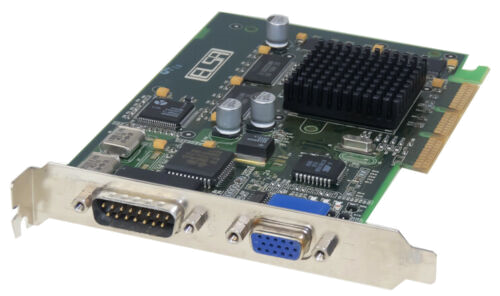 Erazor III Erazor III
Launched: 1999
Chipset: nVidia RiVA TNT2
Bus: AGP 2x and 4x
Memory: 32 MB SDRAM
RAMDAC Clock: 300 MHz
Price When New: ?
Erazor III is ELSA's answer to those looking for a decent card based around nVidia's RiVA TNT2 chipset. The card has 128-bit 2D acceleration with an optimised pipeline for 8, 16, 24 and 32-bit colour depths.
It supports Direct3D, OpenGL 1.1, DirectX 6.1.
There was a separate version of the Erazor III that got a video-in port as well for video capture.
More Images
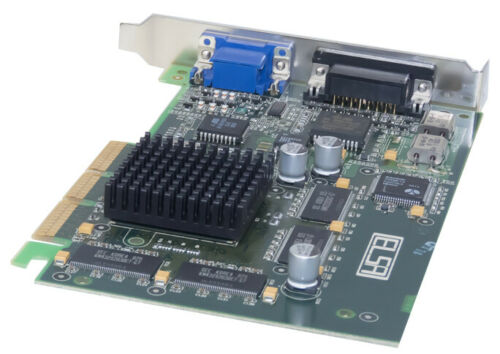
|
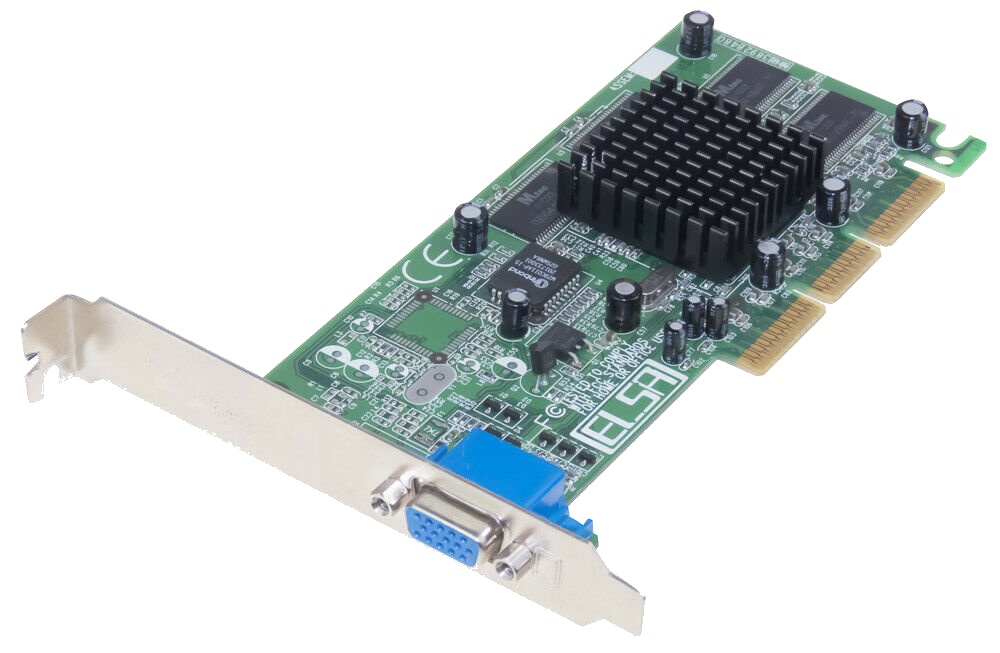 Erazor III LT Erazor III LT
Launched: 1999
Chipset: nVidia RiVA TNT2 Pro
Memory: 32 MB DDR
Bus: AGP
Price When New: ?
More Images

|
 Erazor III LT-A32 Erazor III LT-A32
Launched: 1999
Chipset: nVidia RiVA TNT2-M64
Memory: 32 MB
Bus: AGP
Price When New: ?
More Images
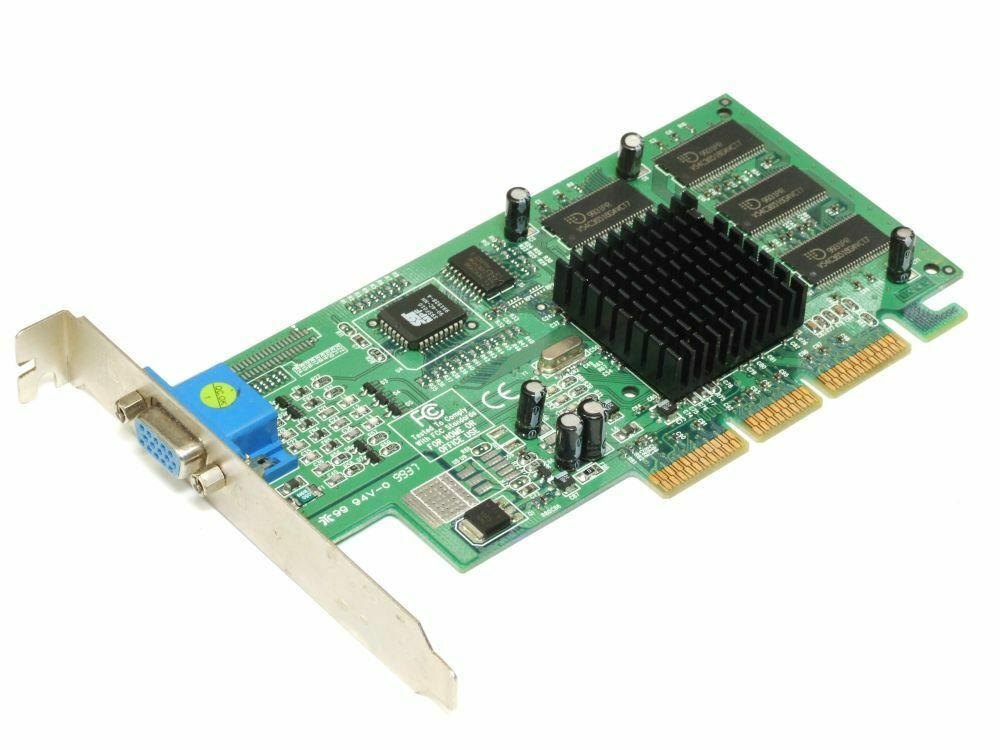
|
 Gloria 3D Gloria 3D
Launched: 199x
Chipset: ?
Bus: PCI
Price When New: ?
|
 Gloria 4 Gloria 4
Launched: 1997?
Chipset: ?
Bus: PCI
Price When New: ?
|
 Gloria Synergy-4 / Synergy-8 Gloria Synergy-4 / Synergy-8
Launched: 1997
Chipset: 3Dlabs Permedia 2 (TVP4020)
Bus: PCI
Core Clock: 83 MHz
Memory: 4 MB or 8 MB
RAMDAC Clock: 230 MHz
FCC ID: KJGP2EASY
Price When New: ?
The Synergy-4 and Synergy-8 (4 MB and 8 MB versions respectively) are DirectX 5-compatible and OpenGL 1.1-compatible graphics cards designed for Windows 95/98 and NT 4.0. They have a pixel fillrate of 83 Mpixel/s and a texel fillrate the same.
This card was sold to the OEM market, specifically Compaq.
|
 Gloria Synergy+ Gloria Synergy+
Launched: 1998
Chipset: 3Dlabs Permedia 2 (TVP4020)
Bus: AGP 2x
FCC ID:
Price When New: ?
This card was sold to the OEM market, specifically Compaq.
|
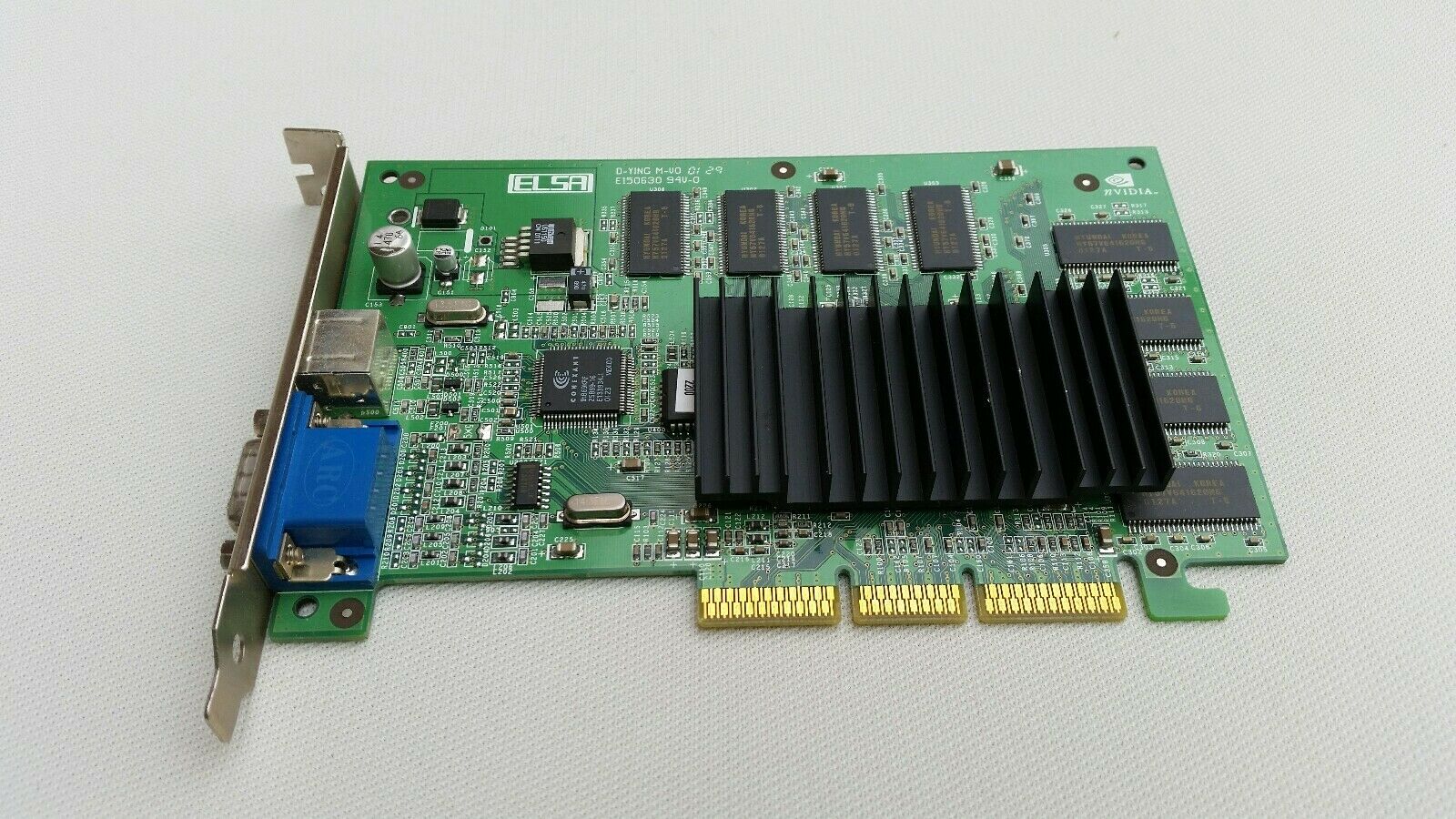 Gladiac 511 TV-Out Gladiac 511 TV-Out
Launched: 1999?
Chipset: nVidia
Bus: AGP 4x
Price When New: ?
More Images
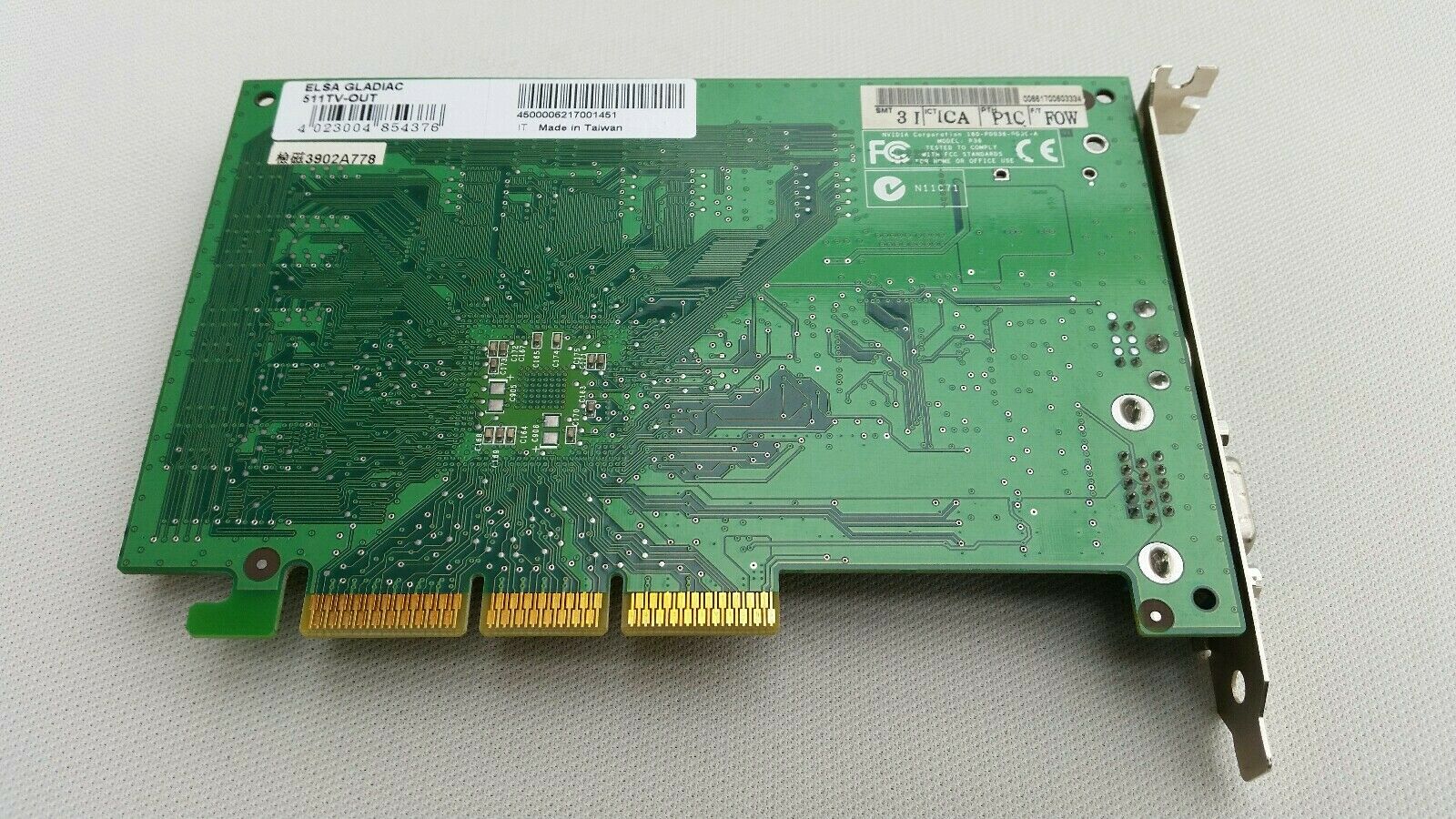 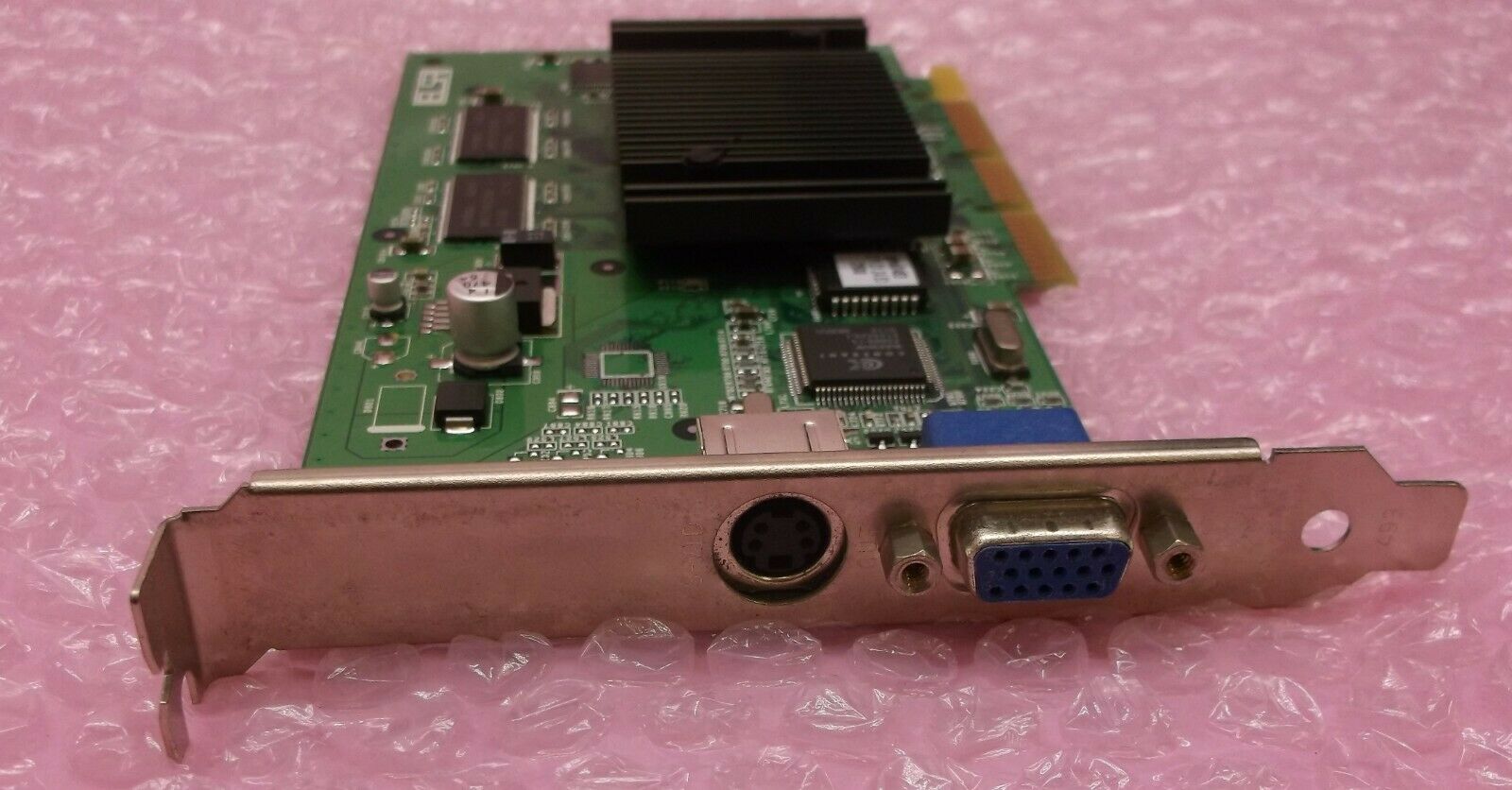
|

















.jpg)
.jpg)
.jpg)


.jpg)
.jpg)


.jpg)
.jpg)

.jpg)
.jpg)
.jpg)










